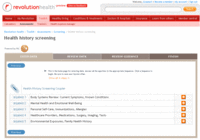 Every senior manager in the media or publishing industry the past ten years has struggled with decisions about how to align their organization for e-media. Do you have your print ad sales team sell online or bring in a dedicated team? Is SEO a core competency or do you use outside consultants? Should we centralize our web development or let each brand do its own thing?
Every senior manager in the media or publishing industry the past ten years has struggled with decisions about how to align their organization for e-media. Do you have your print ad sales team sell online or bring in a dedicated team? Is SEO a core competency or do you use outside consultants? Should we centralize our web development or let each brand do its own thing?
And while it seems like we’ve debated this issue forever (or at least for a decade), the deliberation continues today.
 Executive recruiter Cara Erickson (Managing Partner of New Coordinates) and Outsell Lead Analyst Chuck Richard have collaborated on a fascinating new study, “Creating the E-Media Organization.” The study is based upon interviews with CEOs and e-Media executives at 18 magazine and news organizations.
Executive recruiter Cara Erickson (Managing Partner of New Coordinates) and Outsell Lead Analyst Chuck Richard have collaborated on a fascinating new study, “Creating the E-Media Organization.” The study is based upon interviews with CEOs and e-Media executives at 18 magazine and news organizations.
The authors describe four potential frameworks:
1. Publisher’s pure play: the e-Media organization is completely separate from the traditional print organization, with its own P&L, reporting to the CEO.
2. Centralized structure with a corporate e-Media group servicing each of the business units.
3. A hybrid/matrix approach with online P&L’s rolled into the brand P&L’s.
4. Brand-integrated, where the e-Media function is fully integrated into each brand.
The “pure-play” approach was common in the mid-90’s as publishers sought to take advantage of this new, disruptive channel. According to the study, only 2 of the 18 companies surveyed still employed a pure play model today.
The hybrid approach is the most commonly used today, with eleven of the eighteen companies surveyed using it. In this model, the online business may have a separate P&L but it is rolled up into the brand P&L. The benefit of this approach is that the online leaders interact with the traditional business leaders, which should lead to knowledge transfer over time.
The brand-integrated structure is clearly the preferred model in the long-term. Business leaders should be focused on brands, not on platforms. That being said, there are risks for companies looking to rapidly move to this approach without having the talent (both executive and through the ranks) to support it.
The report delves deeply into the leadership skills required to run today’s diversified media business. The authors discuss the value of “straddlers”, whom they define as “executives with a traditional media background, but who’ve spent the past 5-10 years in interactive media.” As they point out, not only are straddlers crucial in understanding the issues the business faces, but they are critical magnets in attracting online talent, otherwise hesitant to bring their digital media skills to an old media brand. The need to infuse traditional media organizations with digital understanding often creates conflicts with the traditional publishing model, where management comes up through the ranks. More and more, traditional publishers are going outside their organizations for new leadership, or finding that talent through acquisition of online properties.
Either way, the survey describes a huge imbalance between supply and demand. Virtually all the companies in the study had more online vacancies than they were able to fill and one executive indicated that the “demand for e-talent is five times greater than the supply”. The change in skills cut across all aspects of the business – in addition to the obvious needs in marketing, product and technology, the dynamic nature of online media has had a similar impact on sales and editorial. Perhaps most critical, the study points out the need for nimble leadership at the top, capable of making fast decisions and recalibrating on the fly. Or, as Outsell describes it, the need to “fail faster”.
For those who’ve spent the past decade leading media and publishing organizations through change, these issues are not new. What may surprise some is the fact that ten years in, we’re still struggling to solve these issues and most media companies have yet to fully integrate online with their traditional platforms. More importantly, the next five years will likely bring a more rapid pace of change than the past five. Web services have lowered the barrier to entry for online content, so you’ll see more competitive pressures than in the past.
While there's no simple plan for managing this change, it's helpful to understand where you stand in comparison to your peers.
To order a copy of the study, visit Outsell.
If you’re an organization seeking digital leaders to fuel growth, or if you’re a straddler (and if you’re a reader of this blog, there’s a good chance of that) seeking new opportunities, reach out to at New Coordinates.
 The second previews panel focused on emerging companies in the Content Delivery space. Guy Nouri, CEO of video publishing network Dragonfly, led off with a demo of their hosted solution for enterprise delivery of multimedia content.
The second previews panel focused on emerging companies in the Content Delivery space. Guy Nouri, CEO of video publishing network Dragonfly, led off with a demo of their hosted solution for enterprise delivery of multimedia content.  Neal Goldman, CEO of Inform Technologies, provided an overview of their platform for tagging unstructured content. The technology uses semantic tagging to identify topics, companies, persons, industries, places and products within an article. The tagged content creates “Smart Links”, embedded links and topics, each of which generates a new search. For publishers, this approach creates more content for SEO and additional click-throughs within their site. Inform is in use by the Washington Post, ComputerWorld, Answers.com and other leading content providers.
Neal Goldman, CEO of Inform Technologies, provided an overview of their platform for tagging unstructured content. The technology uses semantic tagging to identify topics, companies, persons, industries, places and products within an article. The tagged content creates “Smart Links”, embedded links and topics, each of which generates a new search. For publishers, this approach creates more content for SEO and additional click-throughs within their site. Inform is in use by the Washington Post, ComputerWorld, Answers.com and other leading content providers.![]() Next up was Robert Levitan, CEO of Pando Networks. Pando is a P2P network for distribution of large media. You can think of Pando as Skype for video. Levitan and Pando have applied a freemium model. They have a free downloadable client and offer 1 GB of free space for consumers. That approach has helped them gain more than 3 million installed users to-date, with 250,000 new users per week. Their plan is to grow the business through advertising, premium services and technology licensing.
Next up was Robert Levitan, CEO of Pando Networks. Pando is a P2P network for distribution of large media. You can think of Pando as Skype for video. Levitan and Pando have applied a freemium model. They have a free downloadable client and offer 1 GB of free space for consumers. That approach has helped them gain more than 3 million installed users to-date, with 250,000 new users per week. Their plan is to grow the business through advertising, premium services and technology licensing.




















